In Singapore, this father built a family home for his three daughters to enjoy
The owner of this four-storey house designed it for his three daughters to bond with one another, their friends, and their grandparents, who live next door.
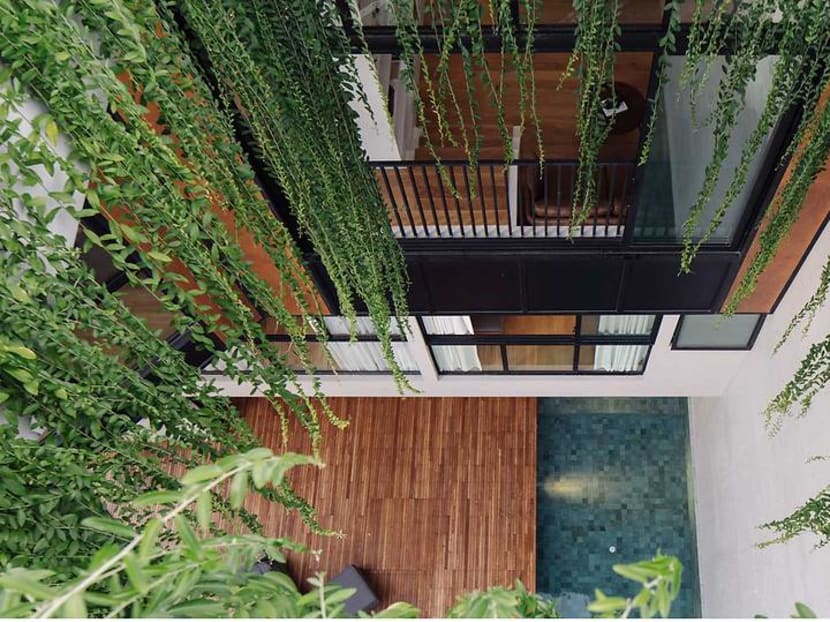
This four-storey dwelling is known as the Void House because of a skylight in the roof. Curtained by draping creepers, the skylight provides a connection to nature, allowing sunlight, natural ventilation and rainwater to cascade into the residence. (Photo: Khoo Guo Jie)
Ten years ago, the owner of this semi-detached house brought a plot of land behind his parents’ home, waiting for the right time to develop it. The Singaporean businessman had lived with his family abroad for 15 years for work before returning to Singapore about six years ago, as he wanted his three daughters to attend primary school here.
“A few years ago, we decided it was time my daughters’ needs will be pretty stable for the next 10 to 20 years. My oldest daughter is in Primary Six this year; my other daughters are aged 10 and 6,” said the owner. The family were living in an apartment nearby and after rebuilding the house, moved in last year.
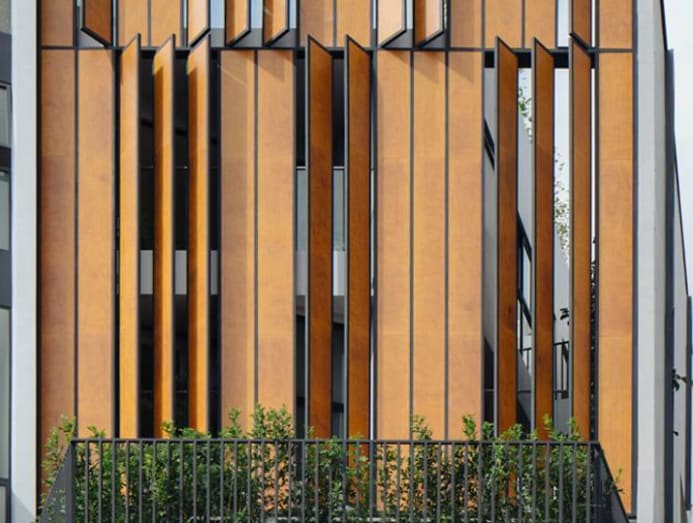
The owner liked the work of architect Tiah Nan Chyuan, who had designed boutique hotel Lloyds Inn and a shophouse with exposed brick for the The Lorong 24A Shophouse Series in Geylang.
“The most important thing was that when I talked to him, the vibe was better than the other architects I had spoken to so I got him to design the house,” shared the owner.
He told the director of FARM Architects his brief: Privacy, brightness and airiness. He also wanted the home to be a place where his daughters could hang out with their friends, especially when they became teenagers.
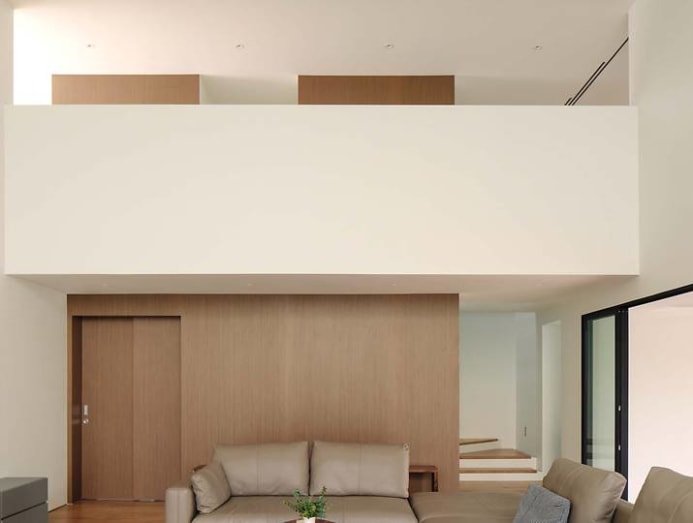
WATCH> How this Singaporean rebuilt his family home with love for a new generation
The first challenge Tiah faced was the plot’s unusual shape. “As the semi-detached house is in a cul-de-sac with a very small entrance frontage, all the adjacent houses are only two metres away. With that in mind, we decided to adopt a layered and inward-looking approach with controlled openings to protect the occupants’ privacy. We started by creating a solid block and then carved out openings and spaces in relation to the gaps between the neighbours’ houses or views toward the garden or sky,” said Tiah.
Large engineered timber brise soleil in a warm, copper finish defines the front facade. They rise up the second- to attic storeys, revealing little to the street. “The front facade is the only opening where there are opportunities for longer views and wind to enter the house,” highlighted Tiah.
The openness and airiness the owner wanted is experienced in every part of the house. Rather than have a large garden on the first storey that would be under-utilised, Tiah inserted pockets of landscape on every level that lets interiors commune with nature in private. They also amplify natural illumination and breeze into the deep plan.
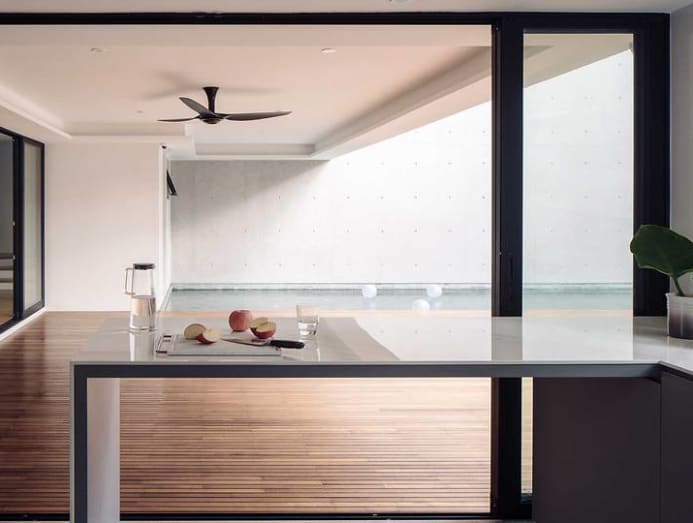
During our visit, the owner led us past the living room to a vast deck at the rear facing his parents’ house. “Because my house bordered onto my parents’ home, I thought we could turn [the rear] into a space where they could also access and enjoy,” he said.
The serviced spaces were positioned at the street-facing side to free up the rear for this purpose. Looking up four storeys, a skylight in the roof is curtained by draping creepers. During downpours, rainwater falls down like a waterfall through this gap and straight into the pool.
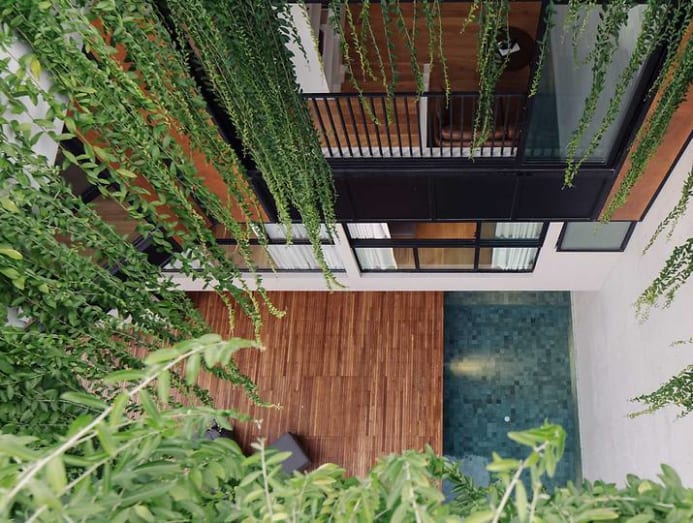
The family eventually moved their dining table next to the pool. “We have all our meals here. We spend a lot of our time here. We get a lot of sunlight but it’s sheltered from the rain,” said the owner.
The grandparents sometimes join in. A gap in the boundary wall allows free passing of both households. In the mornings, the grandparents can wave across to their grandchildren in their bedrooms when they wake.
The house is well connected vertically, bridging familial bonds from different parts of the home. For example, a mezzanine overlooks the living room. One side of this level contains two guest rooms, a bathroom and a small sitting room.
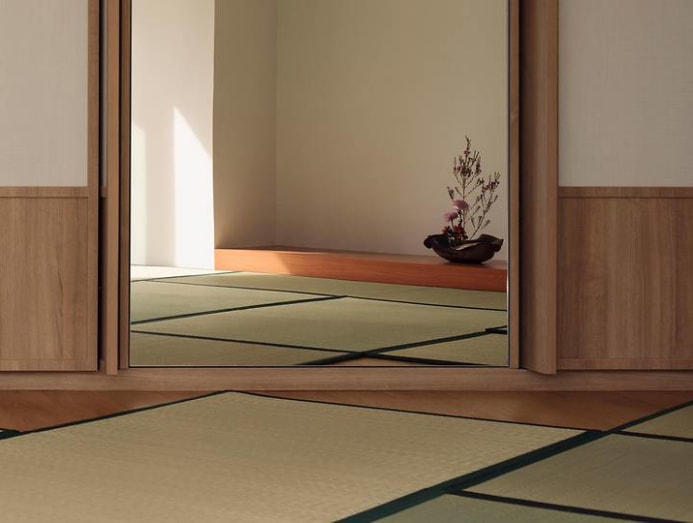
READ> In Singapore, two siblings build a home next door to their parents to foster familial ties
“There is a sliding door that when closed, enables this area to become a two-bedroom apartment. My wife is from Japan and sometimes her parents or friends come over and stay for long periods so this [layout] gives them privacy,” said the owner.
On the other side of the mezzanine, a room is floored with tatami mats. The owner’s wife conducts tea ceremonies and kimono-wearing sessions here for her Japanese friends and acquaintances.
“One of my daughters does ballet so sometimes, she turns this into a studio where she can practice,” said the owner. It looks out to a Japanese garden floored with loose pebbles.
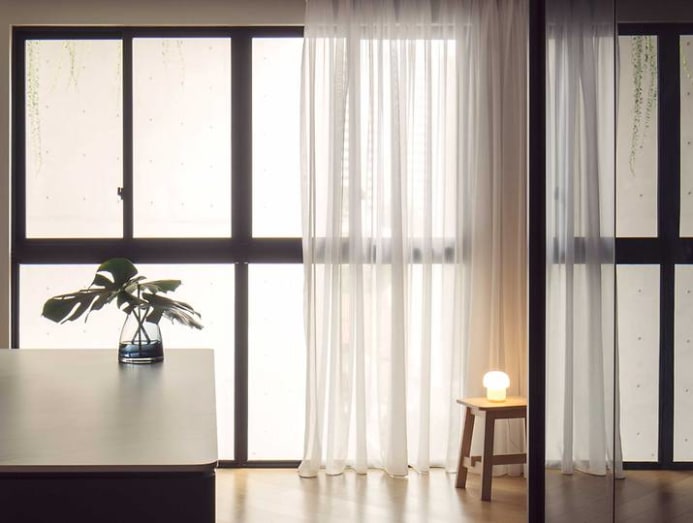
On the third storey, a voluminous library has shelves reaching the ceiling. The master bedroom suite is also on this level. It comprises a study wing, master bathroom and terrace with a raised pond that is home to a turtle. It had found its way into the pool last year. The facade fins give this garden privacy while sounds of gurgling water create a tranquil atmosphere.
The master bedroom is also joined to another bedroom that was originally intended for the daughters to sleep together in before they grew older and migrated to their own bedrooms.
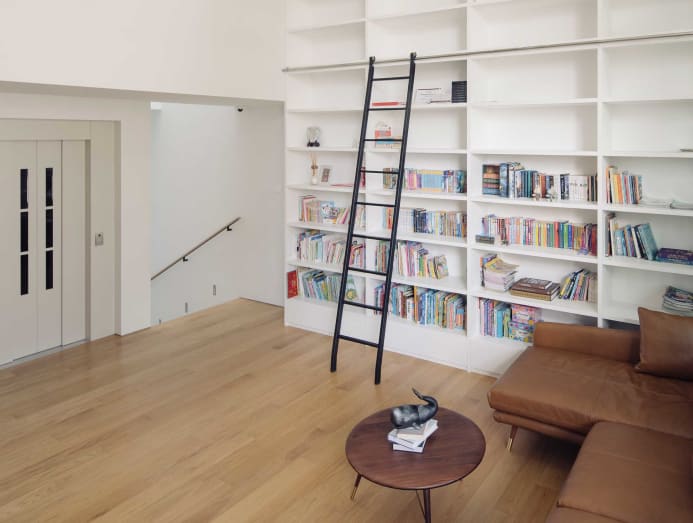
“But after a week of staying here, they all decided to go upstairs,” laughed the owner. “They come here once in a while when they are in a camping mood. Other than that it’s empty, so we’re thinking of what to do with it – maybe turn it into a gym or whisky bar.”
The daughters’ bedrooms are on the fourth storey. Each features a different layout due to the unique plot shape. A sliding door divides them from the general play area on the same storey so they can switch on the air conditioner at night and open their bedroom doors to make one large bedroom space when desired.
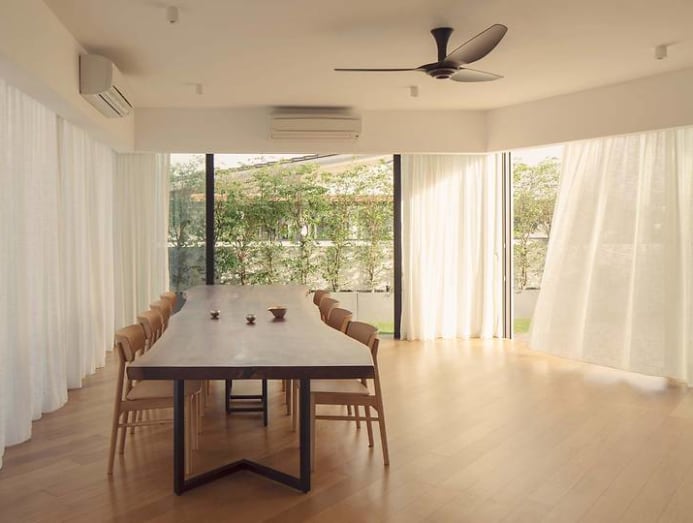
“Internally, we tried to get around the odd geometries of the site by identifying a dominant axis for each floor and rotating the plan upwards, using different axis on the different floors. Within each floor, the key spaces will follow the main axis while the secondary spaces will take up the [leftover] corners. By stringing all these spaces tighter in a sequence, we made the house feel bigger,” explained Tiah on the programmatic planning.
Similarly, he broke the design of the staircase up to make traversing up the house daily less daunting and boring. The parts vary in porosity and material. Solid oak timber planks unify the entire structure. “The solid oak nosing was also rounded, following a detail the owner was familiar with from his parents’ house,” said Tiah.
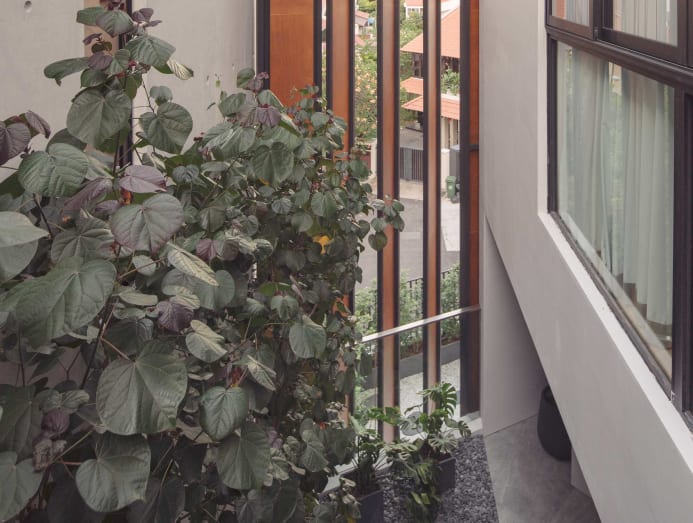
Ever the cautious father, the owner asked Tiah to construct parapets and handrail heights at 1.2 metres instead of the minimum mandatory height of one metre “so that even if they run around they won’t fall over!” he said.
The staircase doubles as a vertical stack, allowing air to circulate through the home. The voids and gardens facing different directions on the different storeys help in this strategy of passive air circulation. It negates the need for excessive air conditioning.
Added Tiah, “The rooms on each floor can be air conditioned without disrupting the internal air volume. The orientation also helps to catch the prevailing wind throughout the year. The owners commented that they noticed a lot of birds making nests in the house since they moved in. It’s an old wives’ tell-tale sign that the house has a comfortable living environment.”
"The owners commented that they noticed a lot of birds making nests in the house since they moved in. It’s an old wives’ tell-tale sign that the house has a comfortable living environment.” – Tiah Nan Chyuan



